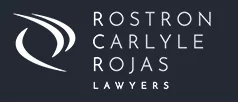In addition to cash contributions, it is possible for members to transfer certain assets into a Self Managed Super Fund (SMSF) despite the general rule that a SMSF must not intentionally acquire assets from related parties of the SMSF. The assets that can be transferred into a Self Managed Super Fund (SMSF) by members of the fund include:
- listed shares and other securities such as managed funds; and
- real property used wholly and exclusively in the operation of a business.1
These transfers are known as in specie contributions and the value of the contribution is the market value of the asset being transferred. Importantly, it is not necessary for the entire value of an asset to be transferred and this can be used where the value of the asset is greater than the contribution caps available to the contributors by making a contribution up to the cap limit and then having the SMSF acquire the remainder of the property at market value.
In addition to the above, before making in specie contributions into a SMSF, advice should be sought on the potential capital gains tax and transfer duty implications that will arise on the transfer of the asset given the transfer will be deemed to be a disposal by the member and an acquisition by the SMSF. There may be some concessions available or strategies that can be implemented, particularly where the asset was used by the individual in their own business or that of an associate.
As can be seen above before making a contribution of an asset careful consideration needs to be given to what asset is being dealt with, who is making the contribution, the tax implications, the value of the asset and whether the transfer is appropriate given the difficulty of getting the asset out of the SMSF once it has been transferred. Such a transaction should be planned well in advice in conjunction with advice from your lawyer and accountant or tax advisor.
Footnote
1 Residential property even if used for rent generating purposes is not transferable to a SMSF.


